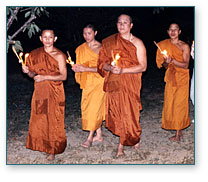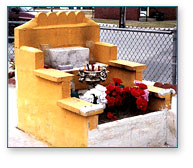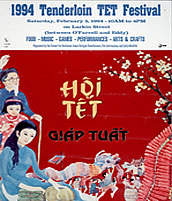Continued from page 2
 Ethnic groups within Southeast Asian countries have varying religious practices which sometimes conflict with the majority religious faith, such as Buddhism. The Iu-Mien practice a religion that combines elements of Taoism, animism, and ancestor worship. For the Hmong, who also practice a combination of animism and ancestor worshipping, shamans play the roles of both religious leaders and healers, providing for the spiritual and physical needs of the community through elaborate rituals. French Catholics and American Protestants missionaries converted these ethnic groups in their homelands, and more practitioners were converted to Christian faiths after they arrived in the United States.
Ethnic groups within Southeast Asian countries have varying religious practices which sometimes conflict with the majority religious faith, such as Buddhism. The Iu-Mien practice a religion that combines elements of Taoism, animism, and ancestor worship. For the Hmong, who also practice a combination of animism and ancestor worshipping, shamans play the roles of both religious leaders and healers, providing for the spiritual and physical needs of the community through elaborate rituals. French Catholics and American Protestants missionaries converted these ethnic groups in their homelands, and more practitioners were converted to Christian faiths after they arrived in the United States.
Adapting to a New Environment
For displaced people, religious practices allow individuals to maintain cultural traditions and reaffirm their sense of identity. Those who were not engaged in religious practices in their homelands sometimes find themselves part of an ethnic religious community in their adopted country. They may become spiritual converts because they feel so fortunate and thankful for their survival. They also may feel a sense of comfort with co-ethnics, since they can socialize with those who can speak their language and understand their culture. Co-ethnics in this setting also recognize and respect their former status in their homeland, which is especially important for those who had to start all over again. Religious groups have established both youth programs and heritage language c lasses to pass along their religious and cultural traditions. Often the younger generation cannot fully understand sermons or religious ceremonies in the ethnic language, and it continues to be a challenge to promote traditional religious practices amongst an Americanized younger generation. lasses to pass along their religious and cultural traditions. Often the younger generation cannot fully understand sermons or religious ceremonies in the ethnic language, and it continues to be a challenge to promote traditional religious practices amongst an Americanized younger generation.
Some U.S. religious groups sponsored refugees when they arrived and converted them to their Western religions. Given the difficulty of performing ethnic religious practices, Southeast Asians have resorted to accepting these Western religions, although they maintain linguistically-separate congregations. Many Iu-Mien have abandoned Taoist/Animist spirituality altogether and have converted to Christianity, leading to conflicted feelings. Religious rituals are intertwined with cultural ones, so preservation of religious faith is tied to protecting a cultural way of life.
|


 Ethnic groups within Southeast Asian countries have varying religious practices which sometimes conflict with the majority religious faith, such as Buddhism. The Iu-Mien practice a religion that combines elements of Taoism, animism, and ancestor worship. For the Hmong, who also practice a combination of animism and ancestor worshipping, shamans play the roles of both religious leaders and healers, providing for the spiritual and physical needs of the community through elaborate rituals. French Catholics and American Protestants missionaries converted these ethnic groups in their homelands, and more practitioners were converted to Christian faiths after they arrived in the United States.
Ethnic groups within Southeast Asian countries have varying religious practices which sometimes conflict with the majority religious faith, such as Buddhism. The Iu-Mien practice a religion that combines elements of Taoism, animism, and ancestor worship. For the Hmong, who also practice a combination of animism and ancestor worshipping, shamans play the roles of both religious leaders and healers, providing for the spiritual and physical needs of the community through elaborate rituals. French Catholics and American Protestants missionaries converted these ethnic groups in their homelands, and more practitioners were converted to Christian faiths after they arrived in the United States.  lasses to pass along their religious and cultural traditions. Often the younger generation cannot fully understand sermons or religious ceremonies in the ethnic language, and it continues to be a challenge to promote traditional religious practices amongst an Americanized younger generation.
lasses to pass along their religious and cultural traditions. Often the younger generation cannot fully understand sermons or religious ceremonies in the ethnic language, and it continues to be a challenge to promote traditional religious practices amongst an Americanized younger generation.